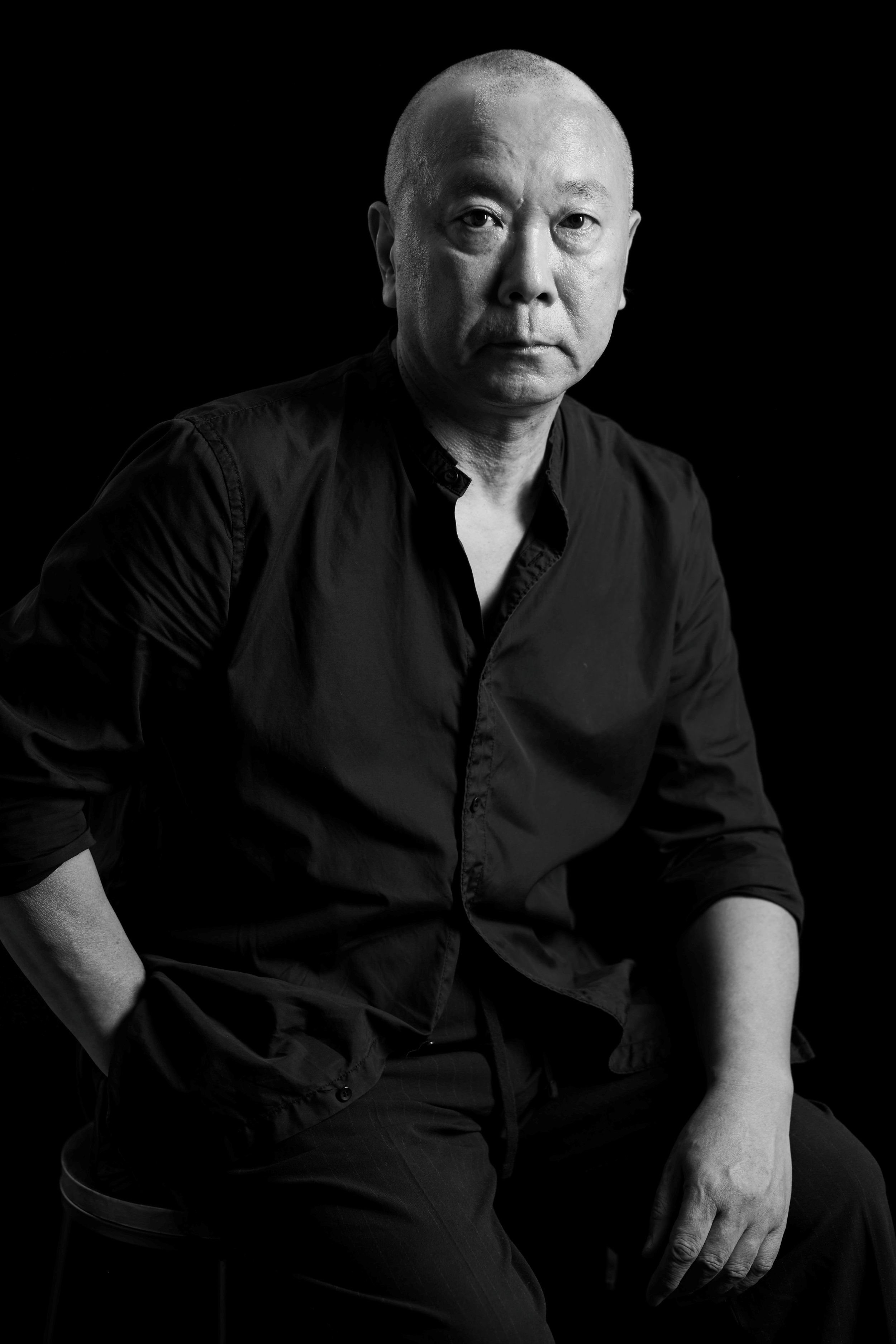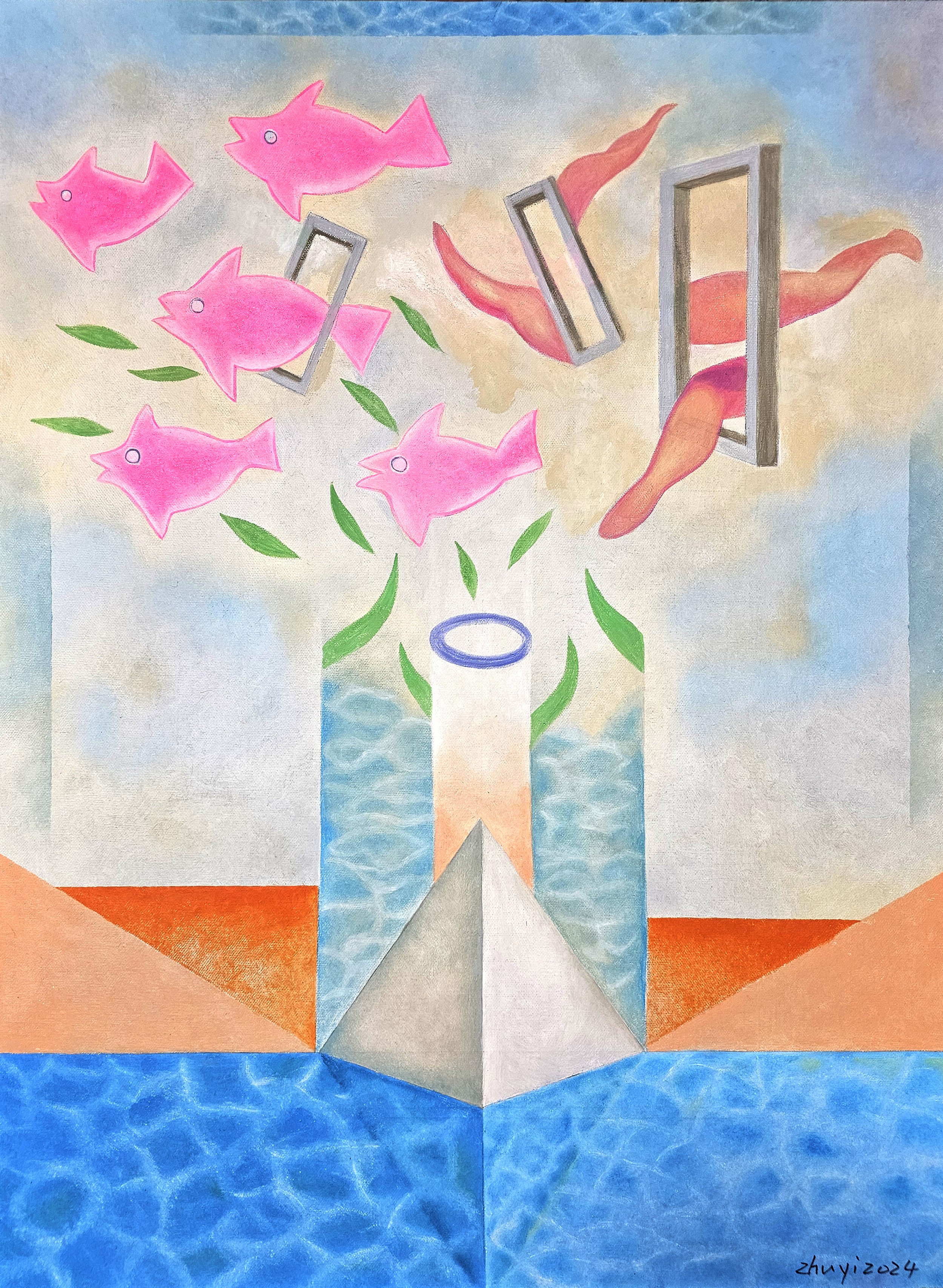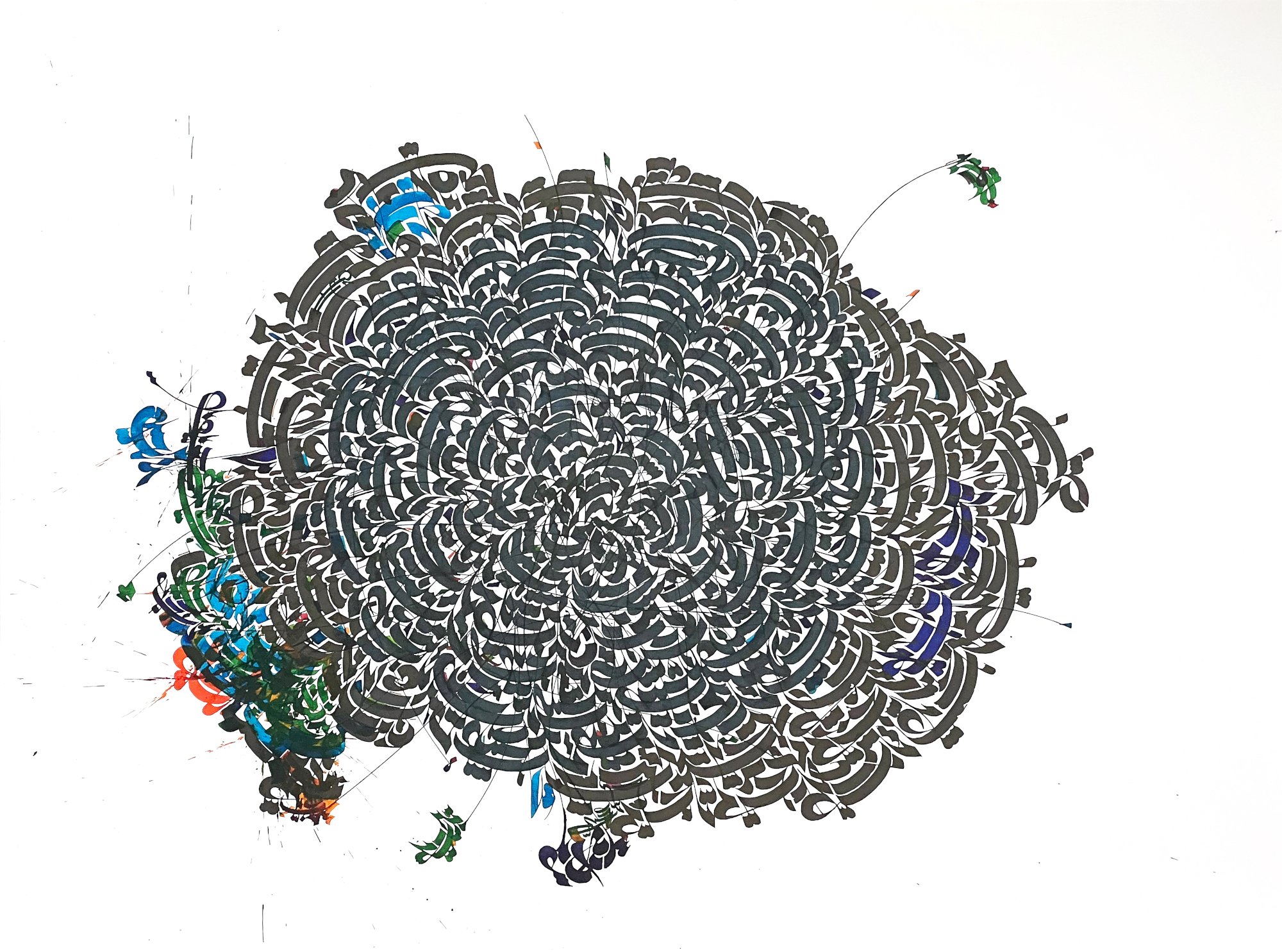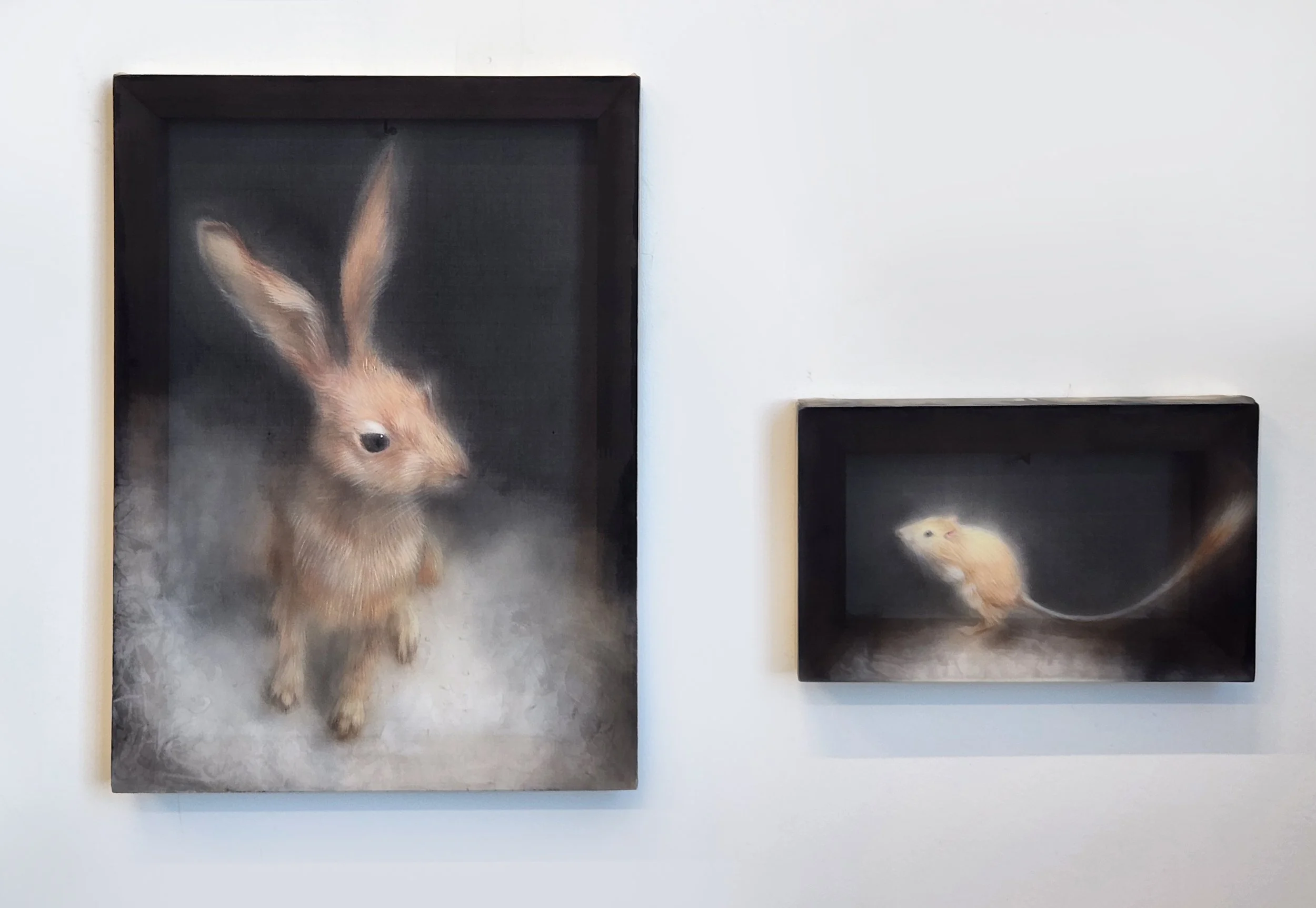10 Questions with Yi Zhu
Yi Zhu is a Chinese artist with a style in deconstructivism and reconstructivism in painting.
Expressionism is an art movement that emerged in the early 20th century. It emphasizes the artist's expression of emotions and subjective experiences, usually through exaggerated and distorted forms, to convey emotions and feelings. Yi Zhu is a contemporary Chinese artist known for his unique painting style and reinterpretation of traditional painting paradigms.
Yi Zhu's works often combine elements of traditional Chinese painting with modern styles. Through his bold use of color, line, and form, he creates works full of tension and expressiveness. In deconstructivism and reconstructivism in painting, Yi Zhu attempts to challenge the forms and themes of traditional expressionism, creating unique visual effects and emotional experiences through the deconstruction and reconstruction of forms and elements.
Yi Zhu reinterprets Expressionism in forms through distortion, deformation, and abstraction while retaining strong emotional expression and personal feelings. He explores how to create modern works with personalized expression through the reshaping of color, line, and form. Through deconstruction and reconstruction, Yi Zhu challenges the boundaries of traditional expressionism, explores new ways of artistic expression, and brings new visual experiences and emotional resonance to the audience.
Yi Zhu - Portrait
ARTIST STATEMENT
Construct a state of mind. We cherish the totem of life. We pass on life with heritage. In difficult times, we stay alive to seek beyond.
Yi Zhu is inspired by the totem and pottery culture of ancient China, along with the papercutting techniques in the Han Dynasty of China. He utilizes deconstruction and reconstruction to create a new relationship among colors, with the perception of expansion and contraction of life. The creation of emotion from Yi Zhu is to awake the sense of life, empathy and love.
Our emotions are created because of society, family, people, species, and the disturbances of the environment. Yi Zhu creates the subjective perception on the canvas with the objective perception outside of the canvas. This is the spirit and style of Yi Zhu in creating a series of paintings of emotions.
Posthuman implant No.01, Oil on canvas, 80x100 cm, 2024 © Yi Zhu
INTERVIEW
First of all, can you tell us about your journey as an artist, from your beginnings in printmaking and illustration to your current focus on painting?
In the early stages of my career, I engaged in printmaking and illustration for literary novels, receiving accolades for my illustrations for famous Chinese literati. I was a member of the China Publishers Association on the illustration art committee and also founded my own design company. My first client was Coca-Cola (China) Beijing Bottling Factory, where I worked on the design, production, and installation of point-of-sale advertisements for Coke. This later evolved into working for Coca-Cola's marketing department (Shanghai) on point-of-sale advertising design. I also designed, produced, and installed point-of-sale store advertisements for Budweiser China, as well as for Nestlé for its early entry into the Chinese market, focusing on point-of-sale advertising design. After a successful career and due to the COVID-19 pandemic in China, I shifted from a customer service-oriented philosophy to expressing my own values through artistic and commercial creative activities.
What inspired your transition from running a commercial design company to creating fine art pieces?
Commercial art design is customer-driven and made for the market needs. After decades of work in commercial art design, I would like to follow my heart for my own artistic dream. That is to be my subjective self and to express and create.
Cement space No.02, Oil on canvas, 60x80 cm, 2024 © Yi Zhu
Are you still following the same inspiration? And what did you learn along the way?
My creation consists of the materiality and the abstraction. In the physical world, I create a spiritual world of the abstraction. I deconstruct the structure of the materiality, and reconstruct my spiritual world on abstraction. The fundamental of life is to breathe. The exhale is expansion, while the inhale is contraction. This is the physicality of life. In the social context, there is attitude and spirit to the inhale and the exhale of human physicality. This is a relationship of deconstruction, a realization of the reconstruction of the visuals for the spiritual world. Deconstruct materiality and reconstruct spirituality.
I have been deeply influenced by Ludwig Wittgenstein's philosophy on logic and propositions.
My creative philosophy in painting is deconstructivism and reconstructivism. I reconstruct the new visuals in a parallel world, with the deconstruction of the materiality of the physical world. I decompose myself to pursue the struggle and dignity of the fundamentals of life in a parallel world. A purely idealistic subjective expression.
Materiality to the world of desires and breathing for survival is as the spirituality of humans to the luxury of expansion and contraction of breathing for life. I'm not going into this world of structures and rigid languages. I'm creating a new space of visual languages for the position of the soul, as a bridge connecting the virtual to the real. I enable the perception of the vibrant colors and dignity of life in my works. What needs to vanish is not my virtual spirit but the rigid thoughts for life from the rigid structures of the world. This is a question regarding the perception of the origination of life.
Can you walk us through your process of creating a painting, from concept to completion?
The New Species series of paintings was created in the context of sensing the life of species on a food chain. I found the common factor between the breathing of fish and the breathing of humans and created symbols for it to construct the perception of life, in the form of new species with the reconstruction of the facial pattern with fish, along with vibrant colours. It is my attitude toward the diversity of species and the co-existence of species. Humans should co-exist with diverse species.
Construct a state of mind No. 02, Oil on canvas, 80x100 cm, 2024 © Yi Zhu
Construct a state of mind No. 03, Oil on canvas, 80x100 cm, 2024 © Yi Zhu
Your current work is inspired by the totem and pottery culture of ancient China, as well as papercutting techniques from the Han Dynasty, as you mention in your statement. How do these influences manifest in your art?
In the series of works for New Species, I utilized the pottery patterns from the Majiayao culture (3000 BC) near the Yellow River to express the expansion and contraction in my works, along with the breathing of fish and human, to create the symbolic language for a new species, expressing the diversity of life.
In the series of works for Construct a State of Mind, I utilized the penile totem for life and death in the Chinese culture to express the hope for the extension of life and the eagerness for the new coming of life. It's a totem culture generalized around the world. I was also influenced by the papercutting techniques in the creation of my works in this series and others to redefine symbols, infusing expansion and contraction in life to my expression in my works.
Could you explain how you use deconstruction and reconstruction techniques in your artwork and what effect you hope to achieve?
In my paintings, I deconstruct the structure, the rigid realization of colors and the space, to construct on the level of imagination. I hope my works would like the audience to feel the expansion and contraction of life.
Ultimately, what are the themes you deem central to your work? And what do you wish to communicate?
The theme is to awaken my surroundings, which are insensitive to the diversity of species, the freedom of life, and the space of existence, to ignite them with the passion for the life of colors. Deconstruct materiality and reconstruct spirituality. Because of me, you see yourself.
Red cloth No.02, Oil on canvas, 80x100 cm, 2023 © Yi Zhu
Are there any specific colors or palettes that you find yourself drawn to more frequently in your work? If so, what do these colors represent to you?
I frequently use a set of colors due to their symbolism for life, sex and passion. The colors have become symbols in my works. Sex is life, and life is sex. The colors in my work are a creation of colors on the spiritual level. These colors for me is a representation of the force of awakening.
What do you hope viewers take away from experiencing your art, both intellectually and emotionally?
Because of me, you see yourself.
Lastly, you have already participated in several exhibitions and won important prizes. Are there any upcoming projects or exhibitions that you're particularly excited about?
Yes, I'm looking forward to the upcoming ArtExpo New York in 2024, as well as an exhibition with my works in Rome in 2025. I hope that I can present a better self to myself.
Artist’s Talk
Al-Tiba9 Interviews is a promotional platform for artists to articulate their vision and engage them with our diverse readership through a published art dialogue. The artists are interviewed by Mohamed Benhadj, the founder & curator of Al-Tiba9, to highlight their artistic careers and introduce them to the international contemporary art scene across our vast network of museums, galleries, art professionals, art dealers, collectors, and art lovers across the globe.




















